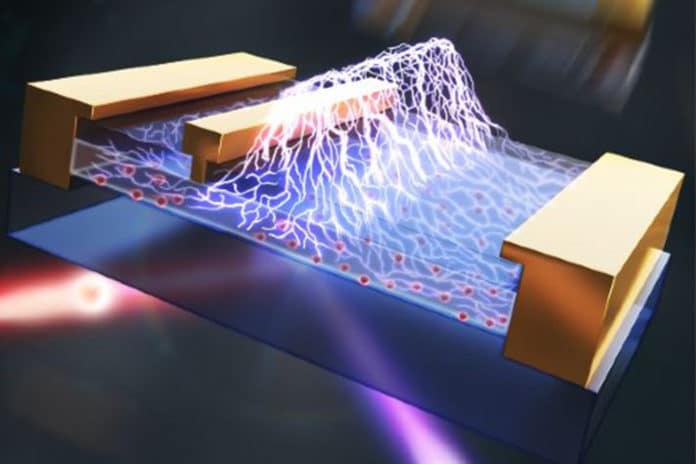Electric fields drive the degradation of wide-bandgap semiconductor devices. However, directly mapping the electric field inside an active device region remains challenging.
Scientists at the University of Bristol recently proposed a new way to quantify this electric field precisely. They have done this by establishing how to remotely measure the electric field inside a semiconductor device for the first time.
Prof Martin Kuball of the University of Bristol’s School of Physics said: “Semiconductors can be made to conduct positive or negative charges and can therefore be designed to modulate and manipulate current. However, these semiconductor devices do not stop with Silicon; there are many others, including Gallium Nitride (used in blue LEDs, for example). These semiconductor devices, which for instance, convert an AC current from a power line into a DC current, result in a loss of energy as waste heat – look at your laptop, for example, the power brick is getting warm or even hot. If we could improve efficiency and reduce this waste heat, we will save energy.”
“One applies a voltage to an electronic device, and as a result, there is an output current used in the application. Inside this electronic device is an electric field which determines how this device works and how long it will be operational and how good its operation is. No one could actually measure this electric field, so fundamental to the device operation. One always relied on simulation which is hard to trust unless you can actually test its accuracy.”
Finding an optimal design is necessary to make good performance and long-lasting electronic devices out of these new materials. Also, electric fields should not exceed the critical value, which would result in their degradation or failure.
Instead of Silicon, emerging materials such as Gallium Nitride and Gallium Oxide offers high frequency and at higher voltages, respectively. Using such materials could reduce energy loss.
This work will provide an optical tool to enable the direct measurement of electric field within these new devices. This will support future effective power electronics in applications, for example, solar or wind turbine stations feeding into the national grid, electric cars, trains, and planes.
Prof Kuball said: “Considering that these devices are operated at higher voltages, this also means electric fields in the devices are higher and this in turn means they can fail easier. The new technique we have developed enables us to quantify electric fields within the devices, allowing accurate calibration of the device simulations that in turn design the electronic devices so the electric fields do not exceed critical limits and fail.”
“This development helps the UK and the world to develop energy-saving semiconductor devices, which is a step towards a carbon-neutral society.”
Journal Reference:
- Cao, Y., Pomeroy, J.W., Uren, M.J. et al. Electric field mapping of wide-bandgap semiconductor devices at a submicrometre resolution. Nat Electron (2021). DOI: 10.1038/s41928-021-00599-5
